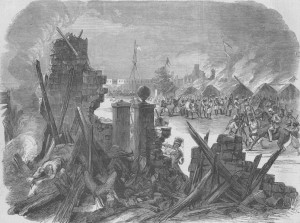Meerut: Is agriculture the only culture in so old and historic an Indian city?
In Meerut, someone once said with acid humour but not a great deal of originality, agriculture is the only culture to be had. I always found it a dispiriting, if painfully true description of the northern Indian city where I spent 14 years of my childhood and which we took great care to identify to visitors as the place where the Great Indian Mutiny began in 1857.
But it’s true enough that Meerut can seem a mirthless, monochrome city, unredeemed by interesting museums, libraries, a cultural scene. There are qawwalis and suchlike, but this is not the place you’d think of when you’re looking for a northern Indian smorgasbord of cultural activities. I’m not sure if that’s the reason Meerut’s former inhabitants are spread so far afield. I’ve met people from Meerut, or with family in Meerut in the most unlikely places. Last week, Sunny Jain of the fantastic Red Baraat band at the Highline Ballroom in New York City. He has two sets of relatives in Meerut. This week, Mr Ranpal Singh, a social worker and polio educator bound for Afghanistan. Like me, he was visiting the Atlanta offices of the US Centers for Disease Control and Prevention. Mr Singh still lives in Meerut, I hasten to add, but seems to spend much of his time travelling out of it (for work).
It’s worth considering what makes Meerut monochromatic? It has a long history, bustling commerce (sports goods and musical instruments) and lies between the plains of the Ganges and the Yamuna. A good example of what it could be is the fragment of a sixth century Ashoka Pillar that reposes in the British Museum. The sandstone fragment bears the Emperor’s edicts and it’s from Meerut. There’s obvious potential for a museum of time, a museum of liberty (considering it’s the birthplace of the Indian “spring”) and another of mythology. This last because Meerut is thought to have been the capital of the kingdom of Mayasura, Mandodari’s father and Ravana‘s father-in-law. Or at least to have some association with Mayasura.
A vibrant city, according to a 2007 study conducted by the Maricopa Partnership for Arts and Culture in Phoenix, is one with spirit, good public transportation and parks, interesting restaurants, a variety of arts and cultural activities and a college/university. Sadly, Meerut like many second-tier Indian cities, as they’re called, is condemned to languish forlornly in a constricting cul-de-sac that says more about city authorities’ lack of imagination than anything else.
Postscript: Fellow Meerut-ite, old family friend and source of much wisdom, Girish bhai has just commented that Meerut does have a small but interesting museum now. Hopefully, the precursor to more.



